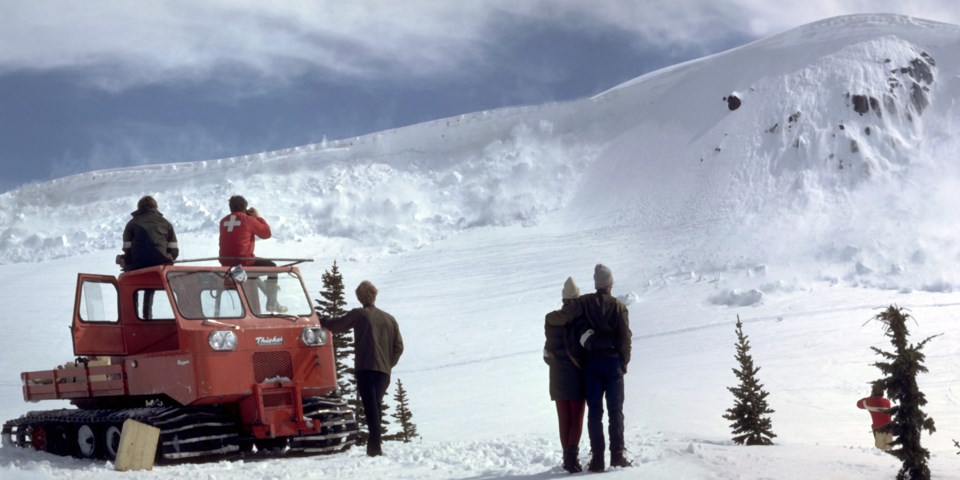Today, Whistler Blackcomb has a fleet of 30 snowcats grooming the resort each night—a far cry from the limited grooming that occurred when Whistler Mountain opened in 1966.
Those lucky enough to have skied on Whistler Mountain in the 1960s may remember moguls the size of Volkswagens and ski runs covered in felled trees. Whistler Mountain had a single Thiokol snowcat and a bulldozer to maintain the ski runs in the early years. The Thiokol was essentially a van on tracks, which was useful for knocking the air out of powder and breaking up ice crusts, but it could not do anything about icy moguls. These machines could turn ice crust into sugary snow at the rate of half a run per night, so it took two days to groom one run.
Cliff Jennings spent two winters working as a groomer on Whistler Mountain when there were only the two machines. He remembers track packing the steep section of the downhill course known as the Weasel. (Track packing involves grooming the run by packing the snow down using only the machine tracks.) “You would go over the edge and the snow was coming over the cab. You put your feet almost on the dash and put it into fourth gear so that the tracks were travelling as fast as you were, otherwise you could lose the track. When the snow stopped coming over the top, you knew you were on the road below midstation and you’d go back up around again.” Skiers’ side-slipping would then smooth the finish for race days.
Perhaps unsurprisingly, the method of flying blindly down the hill in a bulldozer did not continue as the permanent method for grooming the Weasel, and volunteer Weasel Workers began grooming the slope entirely by ski.
The fleet of groomers grew over time, and in 1975, the fall edition of Garibaldi’s Whistler News included an article on the grooming on Whistler Mountain. “At Whistler we use over-snow vehicles called Thiokols, towing various pieces of machinery to literally farm the snow, just as a farmer cultivates his field,” the article read. “At Whistler we have four Thiokol 2100s. The equipment they tow consists of four rollers, two mogul cutters, a powder maker (with another also on order for this winter) and a harrow.”
The article goes on to say, “The eight Thiokol operators work in two shifts to provide maximum coverage of the runs. The day shift starts up the Gondola run at 5 a.m. in the morning and begins grooming at midstation. Here they evaluate the snow conditions and decide what equipment to tow. Mogul cutters and powder makers and the harrow, if the snow is hard and heavily moguled, or if it is a typical deep powder day, rollers to make that fine packed powder skiing we all enjoy so much.”
Even with the improved technology, most of the runs remained ungroomed, and the machine tracks themselves would leave chunks of snow and ice along the runs. The corduroy that we know and love today would not come along until later.






